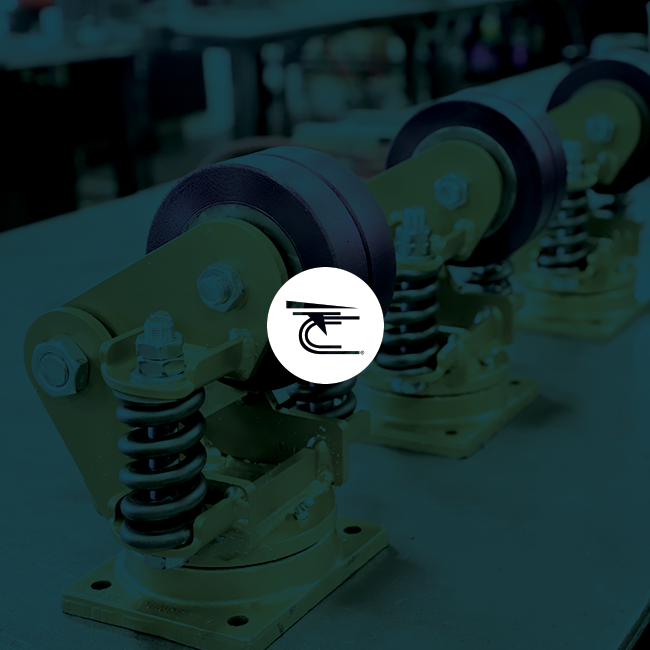

Heavy-duty casters can come with a variety of features designed to save you time and money, reduce the risk of injury, and move loads more safely. If you are considering ergonomic heavy-duty casters, be sure the ones you choose boast the four benefits below. Otherwise, your caster may not be as ergonomic as it seems.
The number one feature that makes an ergonomic caster truly ergonomic is its parabolic wheel face, which is used to reduce friction and minimize tread wear. For example, TWERGO caster wheels from Caster Concepts can reduce initial push force by about 25% thanks to its uniquely designed parabolic face, which can have a tremendous impact on the likelihood of overexertion injuries. This reduced friction also helps to minimize scrubbing when moving the load around corners or obstacles, which further reduces the risk of injury.
Dual-wheel casters can greatly reduce the risk of injury by allowing especially heavy loads to remain closer to the floor, thereby lowering their center of gravity and making them much easier to push and move. In a truly ergonomic caster wheel, both wheels in a dual-wheel setup should be able to move independently of one another, which reduces friction and minimizes scrubbing that can cause problems during load navigation. Independent rotation can also reduce the risk of damage to flooring surfaces.
The tread on a caster wheel is important for ergonomics, too. The tread should be tapered in such a way that it can dispel debris off to the sides as it moves, reducing the risk of a sudden stop or damage to the wheel itself. The tread should be thick enough to reduce friction by keeping the metal part of the caster away from the floor, and it should also wear consistently to reduce the risk of flat spots in the wheel. When these benefits all come together, it results in a safer caster that wears more evenly throughout the course if its life, thus resulting in a longer overall lifespan than non-ergonomic casters.
The aluminum wheel core is also an important part of a truly ergonomic caster. Aluminum is a lightweight material that provides much of the same durability as heavy materials like steel. The lighter the core, the easier it is to move the caster, and the less energy the operator exerts. Aluminum is beneficial for several other reasons, too, including its pleasant aesthetic appearance and its ability to resist rust in high humidity or even when it comes into contact with water.
Ergonomic casters are important for preventing injury in the workplace, so it’s important to make sure that the casters you choose truly fit the bill. Though some casters may only have one or two of these features and still boast the ergonomic claim, you should find casters that have all four features if you want to minimize risk, improve morale, and keep your employees safe on the job. These things will undoubtedly save you money and boost your productivity.